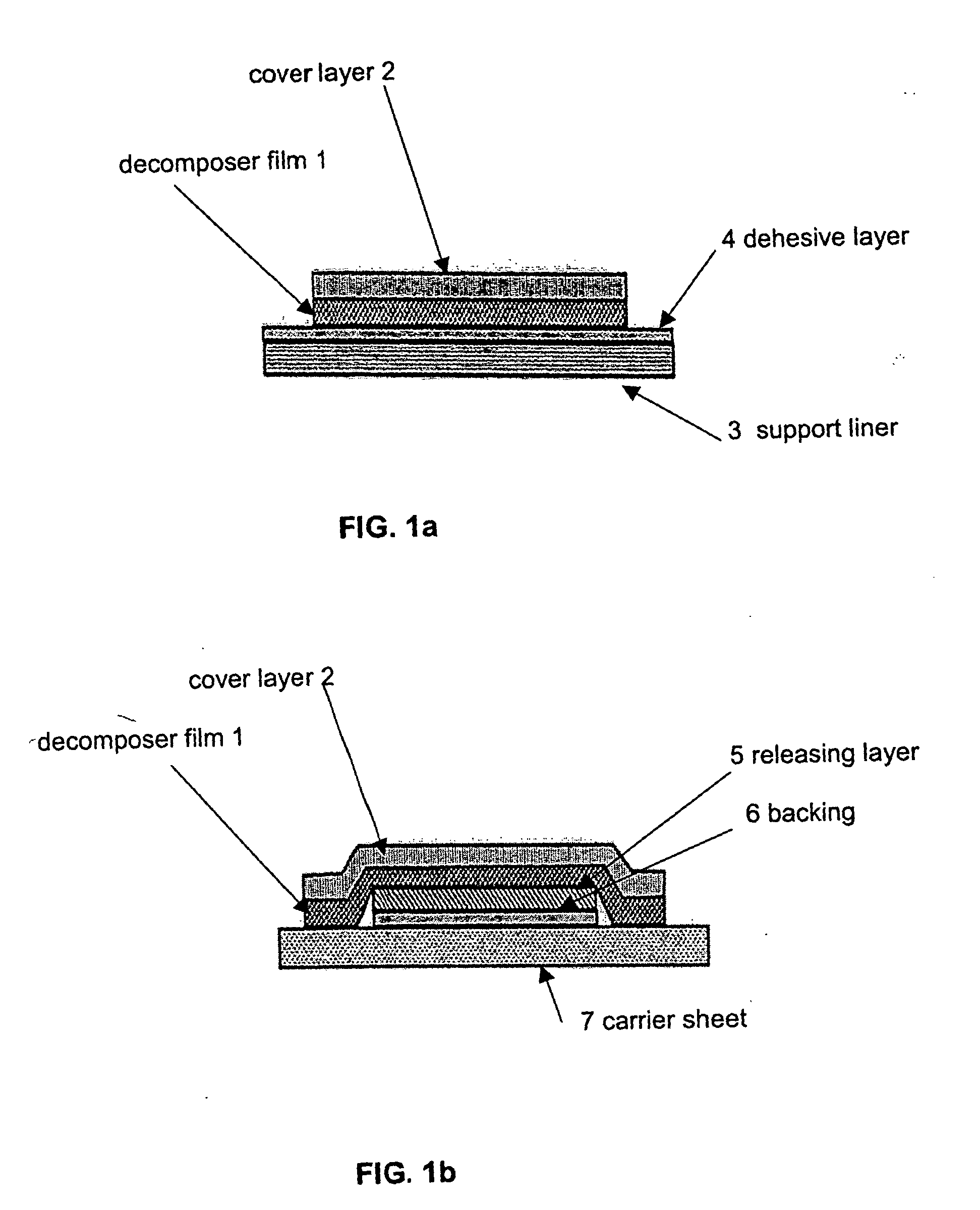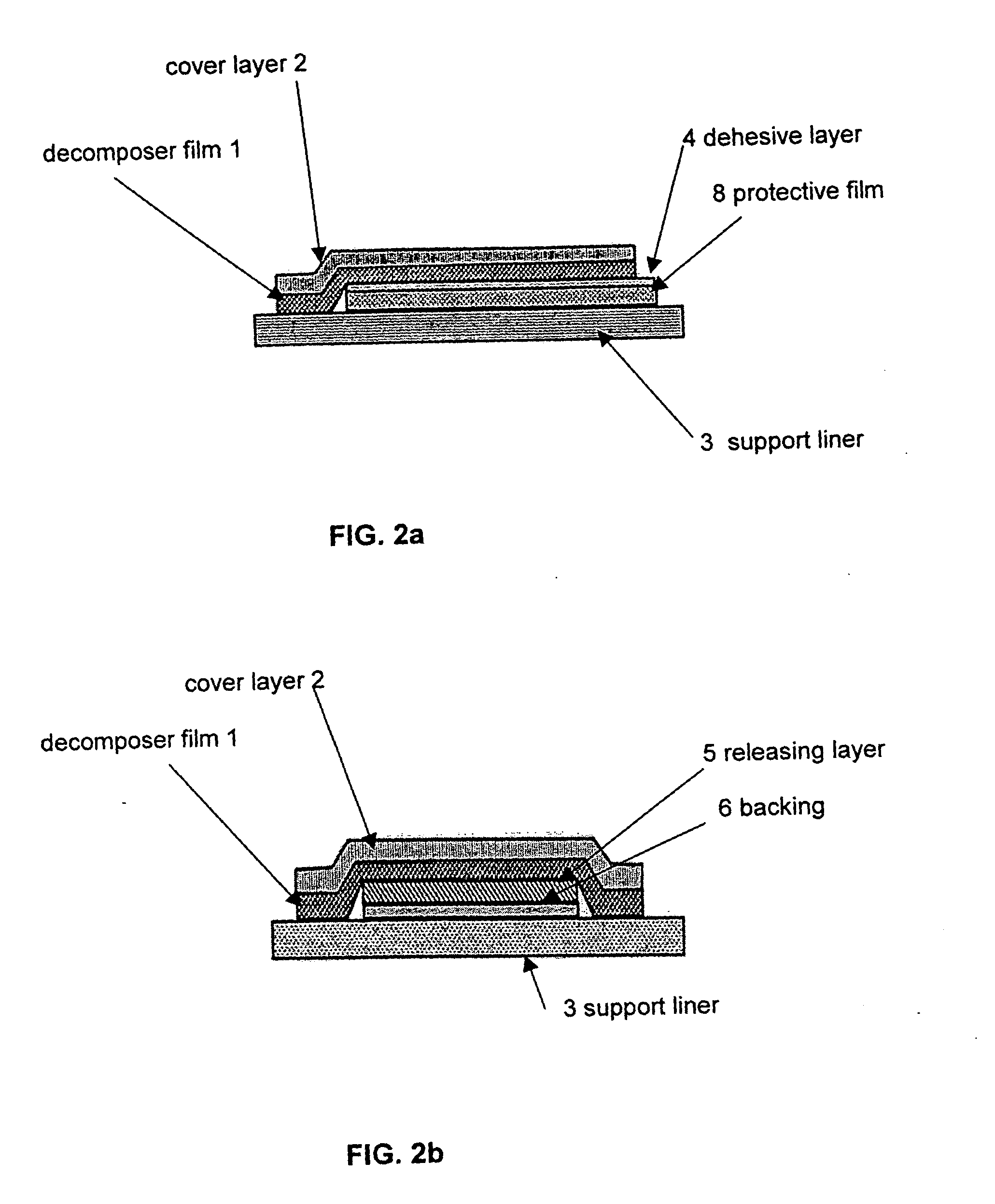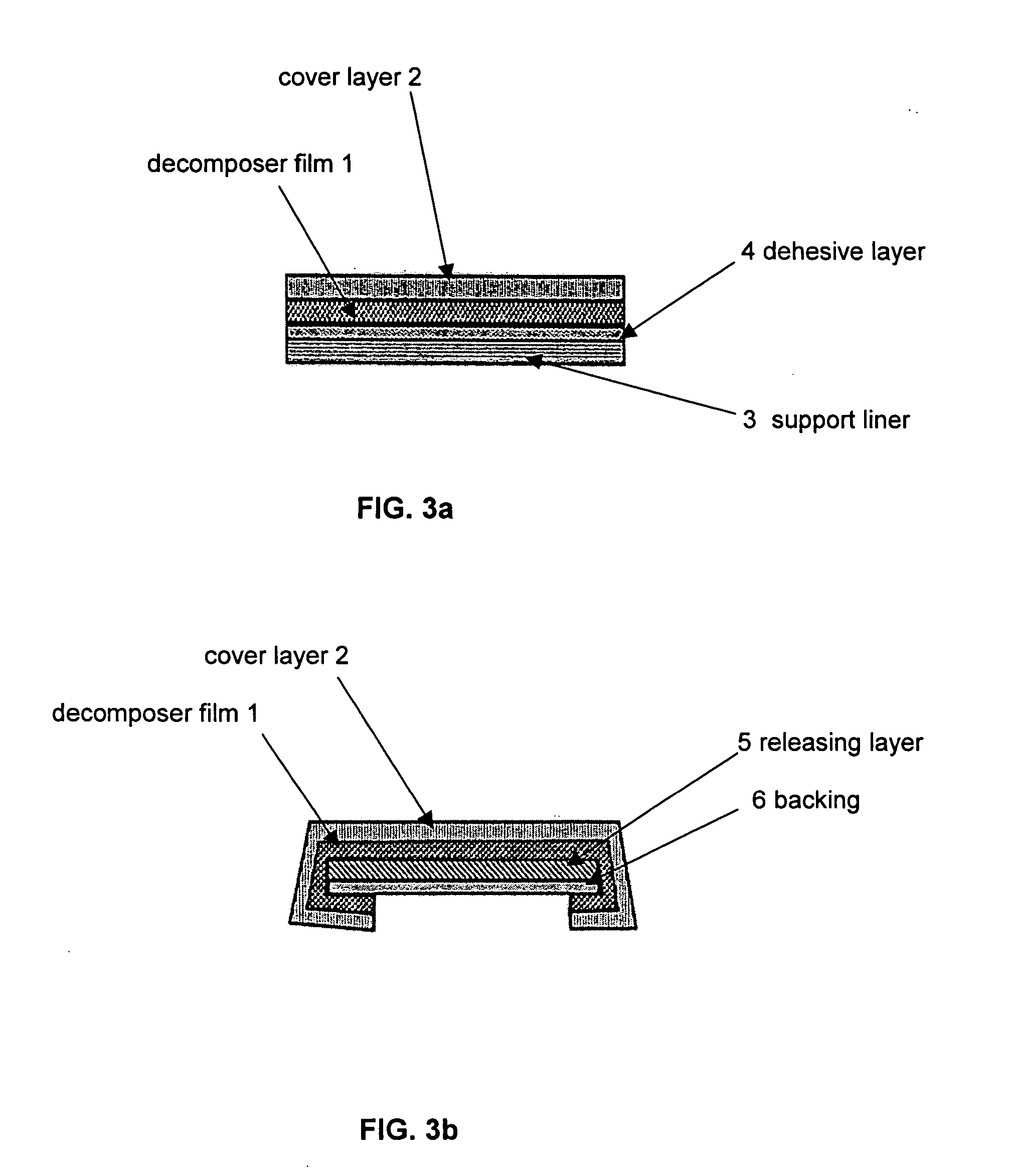Decomposer film for transdermal patches
a decomposer film and patch technology, applied in the direction of bandages, drug compositions, inorganic non-active ingredients, etc., can solve the problems of patch waste with high effective ingredient content, potential environmental damage, and risk of misuse by those with drug dependencies, so as to accelerate the decomposition reaction, increase the interior surface area, and increase the surface area
- Summary
- Abstract
- Description
- Claims
- Application Information
AI Technical Summary
Benefits of technology
Problems solved by technology
Method used
Image
Examples
example 1
Fe(III) Citrate in Lipophilic Acrylate Film with about 0.5% (g / g) Fe(III) Citrate
[0042]
Parts by Weight in dry filmFe(III) citrate - preliminary solution0.5Durotak 387-205299.5
[0043] A 10% (g / g) mixture of the decomposer Fe(III) citrate in water is prepared and the citrate is dissolved by heating to a slow boil to form the preliminary solution. The required amount of this preliminary solution is directly added dropwise in Durotak and stirred in uniformly. A turbid, orange-colored solution (further processed as fresh as possible and protected from sunlight) is produced.
example 2
Fe(III) Citrate in Water-Soluble Methacrylate Film with about 0.5% (g / g) Fe(III) Citrate
[0044]
Parts by Weight in dry filmFe(III) citrate - preliminary solution0.5Ethanol16Adhesive Solution Roehm E35H99.5
[0045] The preliminary solution of the decomposer Fe(III) citrate is prepared as above. The required amount of preliminary solution is diluted next with 1+9 (g / g) parts ethanol (turbidity therein). The E35H is weighed into this mixture and stirred uniformly until yellowish particles dissolve again completely (which takes about a few hours). A canary yellow clear solution arises—further processed as much the same as possible and not stored in sunlight.
example 3
Fe(III)-Citrate-Lipophilic Alkali Acrylate Film with about 1.0% (g / g) Fe(III) Citrate—Completely Dissolved
[0046]
Parts by Weight in dry filmFe(III) citrate - preliminary solution1.0Aminomethylpropanol5.7Durotak 387-205184.3
[0047] A 10% (g / g) solution of the decomposer Fe(III) citrate acting as a preliminary solution is placed in water and dissolved by heating to boiling. Aminomethylpropanol was weighed into the Durotak adhesive and stirred. The viscosity increase was compensated by adding as much methanol as needed (about 5 ml methanol to 10 ml of Durotak). Finally the required amount of the iron salt solution was added drop-wise and stirred. A rapidly clearing orange emulsion (further processed as fresh as possible and protected from sunlight) is produced.
PUM
| Property | Measurement | Unit |
|---|---|---|
| pKa | aaaaa | aaaaa |
| pKa | aaaaa | aaaaa |
| temperature | aaaaa | aaaaa |
Abstract
Description
Claims
Application Information
 Login to View More
Login to View More - R&D
- Intellectual Property
- Life Sciences
- Materials
- Tech Scout
- Unparalleled Data Quality
- Higher Quality Content
- 60% Fewer Hallucinations
Browse by: Latest US Patents, China's latest patents, Technical Efficacy Thesaurus, Application Domain, Technology Topic, Popular Technical Reports.
© 2025 PatSnap. All rights reserved.Legal|Privacy policy|Modern Slavery Act Transparency Statement|Sitemap|About US| Contact US: help@patsnap.com



